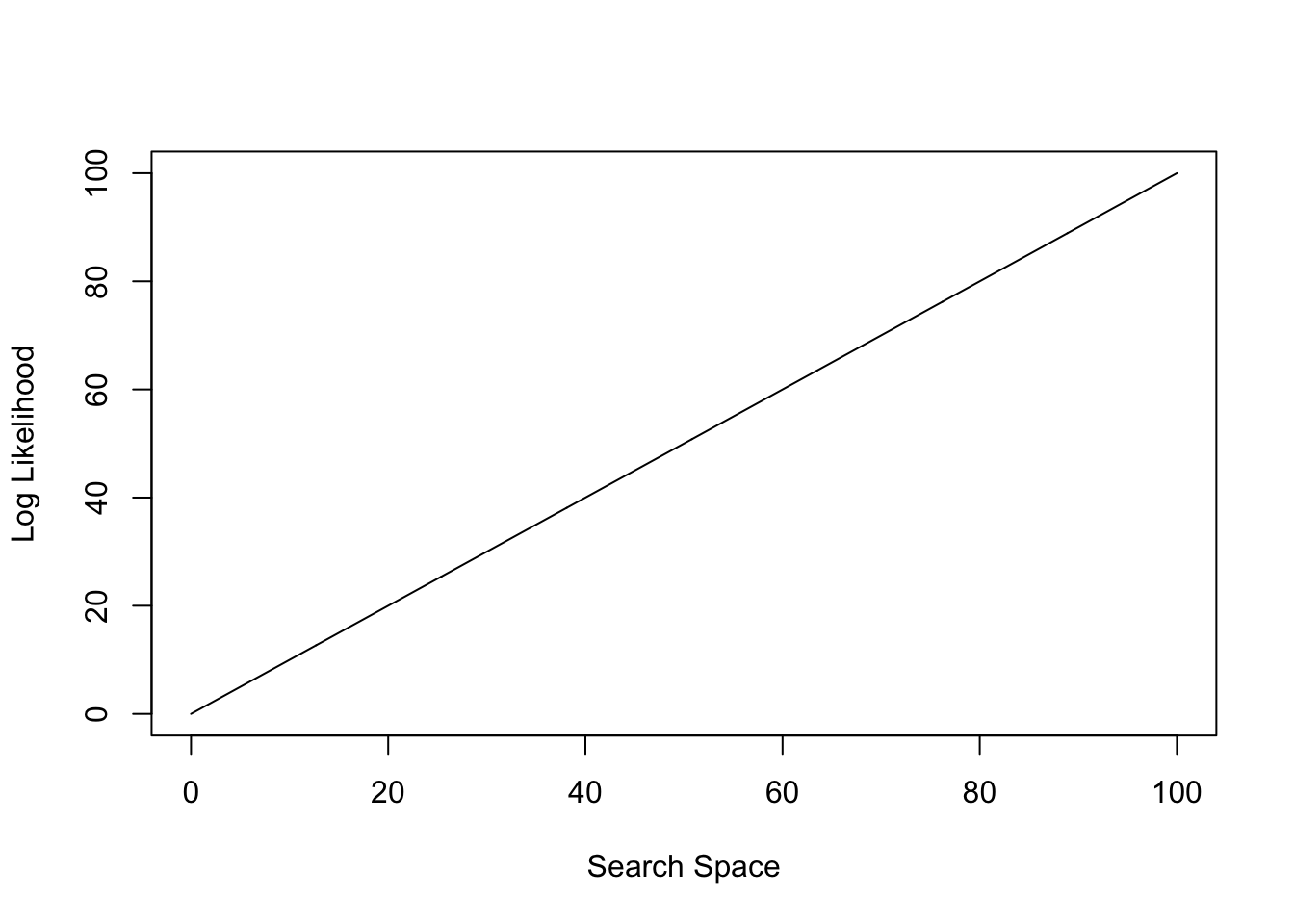14.8 MLE for Poisson Random Variables
- Suppose we use a camera to record an intersection for a particular length of time, and we write down the number of cars accidents in that interval.
- This process can be modeled by a Poisson random variable (now we are non-agnostic), that has a well-known probability mass function given by,
\[ f(x;\lambda) = \frac{\lambda^x e^{-\lambda}}{x!} \]
Here is an example of a string of outcomes generated by a Poisson RV, with parameter \(\lambda = 2\).
## [1] 0 4 1 1 3 3 0 1 1 114.8.1 MLE for Poisson Random Variables: Data
- Suppose that we conduct an iid sample, and gather the following number of accidents. (It is a busy street!)
Code
data <- c(
2, 6, 2, 1, 3, 3, 4, 4, 24, 1, 5, 4, 5, 1, 2, 2, 5, 2, 1, 5,
2, 1, 2, 9, 9, 1, 3, 2, 1, 1, 3, 1, 3, 2, 2, 4, 1, 1, 5, 3,
3, 2, 2, 1, 1, 1, 5, 1, 3, 1, 1, 1, 1, 2, 2, 4, 2, 1, 2, 2,
3, 1, 2, 6, 2, 2, 3, 2, 3, 5, 1, 3, 2, 5, 2, 1, 3, 2, 1, 2,
4, 2, 6, 1, 2, 2, 3, 5, 2, 1, 4, 2, 2, 1, 3, 2, 2, 4, 1, 1,
1, 1, 2, 3, 5, 1, 2, 2, 3, 1, 4, 1, 3, 2, 2, 2, 2, 2, 2, 3,
3, 1, 1, 2, 2, 4, 1, 5, 2, 7, 5, 2, 3, 2, 5, 3, 1, 2, 1, 1,
2, 3, 1, 5, 3, 4, 6, 3, 3, 2, 2, 1, 2, 2, 4, 2, 3, 4, 3, 1,
6, 3, 1, 2, 3, 2, 2, 3, 1, 1, 1, 1, 1, 10, 3, 2, 1, 1, 3, 2,
2, 3, 1, 1, 2, 2, 2, 4, 2, 2, 3, 3, 6, 1, 3, 2, 3, 2, 2, 2
)
table(data)## data
## 1 2 3 4 5 6 7 9 10 24
## 54 69 38 14 14 6 1 2 1 114.8.2 MLE Estimation
Use the data that is stored in
data, together with a Poisson model to estimate the \(\lambda\) values that produce the “good” model from the Poisson family.That is, use MLE to estimate \(\lambda\).
Here is your work flow:
- Define your random variables.
- Write down the likelihood function for a sample of data that is generated by a Poisson process.
- To make the math easier, take the log of this likelihood function.
- Optimize this log-likelihood using calculus – what is the value of \(\lambda\) that results? Compute this value, given the data that you have.
- Maximize this log-likelihood numerically, and report the value for \(\lambda\) that produces the highest likelihood of seeing this data.
- Comment on your answers from parts 4 and 5. Are you surprised or not by what you see?
Code
Code
